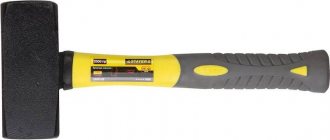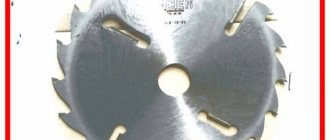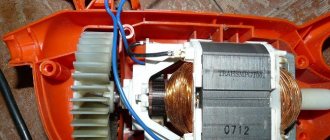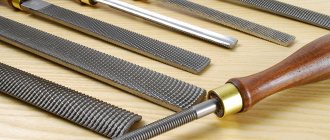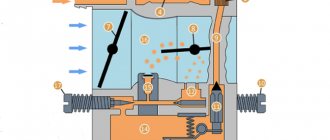to order Sooner or later, every user is faced with the need to use a special tool for unscrewing or screwing bolts or nuts. A wrench helps solve many technical problems. But such a tool is presented in a wide variety, taking into account the sizes.
Every man has one of these keys in his toolbox. The size of each is indicated on the handle, making selection easy. The numbers 7x8 mm show the distance from one rounded end to the other, the required turnkey thread diameter.
“ S ” - designation of a turnkey working surface. But there are simply no indicators on the bolts themselves. Experienced mechanics know how to determine the size of a nut, and despite this, they do everything by eye, because they visually determine the necessary tool. There are fasteners in places where you just can’t find them, so it will take a long time to select a wrench, taking into account the ratio of the thread diameter and the wrench size. If you do not guess the size, it will be difficult to unscrew the nut.
Knowing the thread diameter: how to choose a wrench?
To understand how to determine the size of a wrench from a nut, evaluate the structure of the fastener. When selecting a tool for the job, it is worth considering the location of the edges and the length between them. The easiest way is to use a regular ruler. But there is another way - to clarify the technical characteristics of the parts.
Once you evaluate the table data, you will no longer have to think about how to determine the bolt thread size. There are other set ISO , listed in parentheses.
| Thread diameter, M | Key size | ||
| main S, mm | reduced S, mm | increased S, mm | |
| M1 | 3.2 | — | — |
| M1.2 | 3.2 | — | — |
| M1.4 | 3.2 | — | — |
| M1.6 | 3.2 | — | — |
| M2 | 4 | — | — |
| M2.5 | 5 | — | — |
| M3 | 5.5 | — | — |
| M4 | 7 | — | — |
| M5 | 8 | — | — |
| M6 | 10 | — | — |
| M7 | 11 | — | — |
| M8 | 13 | 12 | — |
| M10 | 17 (16) | 14 | — |
| M12 | 19 (18) | 17 | 21 (22) |
| M14 | 22 (21) | 19 | 24 |
| M16 | 24 | 22 | 27 |
| M18 | 27 | 24 | 30 |
| M20 | 30 | 27 | 32 (34) |
| M22 | 32 (34) | 30 | 36 |
| M24 | 36 | 32 | 41 |
| M27 | 41 | 36 | 46 |
| M30 | 46 | 41 | 50 |
| M33 | 50 | — | 55 |
| M36 | 55 | 50 | 60 |
| M39 | 60 | 55 | 65 |
| M42 | 65 | 60 | 70 |
| M48 | 75 | — | 75 |
| M52 | 80 | — | 80 |
| M56 | 85 | — | — |
| M60 | 90 | — | — |
| M64 | 95 | — | — |
| M68 | 100 | — | — |
| M72 | 105 | — | — |
| M76 | 110 | — | — |
| M80 | 115 | — | — |
| M85 | 120 | — | — |
| M90 | 130 | — | — |
| M95 | 135 | — | — |
| M100 | 145 | — | — |
| M105 | 150 | — | — |
| M110 | 155 | — | — |
The presence of standard parameters simplifies the work with tools and fasteners. If you choose the right tool for working with bolts, the gap between them does not exceed 0.3 mm.
Set of hex screwdrivers and their modifications
Screwdrivers of this type differ mainly in the diameter and length of the shaft, so a particularly wide-profile specialist will always have a whole set of hex screwdrivers with him. Standard screwdrivers come in diameters from 10 to 40 mm. They are selected depending on what kind of hardware will need to be screwed in or unscrewed. The size of the handle also depends on the diameter and length of the rod. If you have to work with small parts or elements, then both the diameter of the rod and the size of the handle will be small. Conversely, for large parts you will need a screwdriver with a large diameter and a large handle.
Recently, hex screwdrivers can be used not only manually, but also electrically. Such models do not have a conventional handle and have an attached electric drive. The design of such a screwdriver is not very different from a manual one. It also consists of a rod and a tip, but instead of a handle there is a special mechanism that connects to the electrical network. Instead of an electric drive, you can find screwdrivers with a mechanical or pneumatic device.
Read also: What kind of oil to pour into a lathe
When screwing or unscrewing, you have to apply a lot of force. The adapted mechanism helps to facilitate work and thereby increase productivity. Typically, in screwdrivers of this type, the rod is not immediately attached to the handle-mechanism, but is inserted separately. Therefore, the design of the rod is such that at one end there is a hexagonal tip, and at the other there are special notches for installing a screwdriver into the mechanism.
Hex nut: how to determine the size of the key for it?
In the world of mechanical engineering and when creating devices, you cannot do without bolts with a cylinder-shaped head. But for fixing them, it is the hex key that is suitable, which is controlled at an angle. There are certain standards according to which threads are created.
| Thread, M | M4 | M5 | M6 | M8 | M10 | M12 | M14 | M16 | M18 | M20 | M22 | M24 | M27 | M30 | M33 | M36 |
| Key size, mm | 3 | 4 | 5 | 6 | 8 | 10 | 12 | 14 | 14 | 17 | 17 | 19 | 19 | 22 | 24 | 27 |
Hex screwdriver: parts and elements
The rod is one of the main elements. They are the ones who manage to screw in or unscrew hardware products. It is on the rod that the entire force load falls. Therefore, it is important when purchasing to pay attention to what material it is made of. It must be durable, not deformed and retain the working part even with maximum effort. Manufacturers usually take these requirements into account and use only high-quality and durable alloys. As already mentioned, steel is used to make the rod. After cutting the rods, the steel additionally undergoes heat treatment, that is, hardening. After this, it will be more durable and reliable.
The tip is made after the rod is completely ready. For this purpose, special forms are used. Hex screwdrivers are made in different shapes. When producing them, you need not only the diameter of the rod, but also the size of the edges themselves. The distance between the edges and their inclination are also important. Typically, such screwdrivers are used for screwing in and unscrewing bolts and screws that have hexagon-shaped recesses on the heads. The hexagon tip helps to increase torque and screw in the connecting element quickly and efficiently.
Screwdriver handles are designed to transmit torque to the main working part. This means it must be strong and reliable. Since the hexagon is more of a hand tool, it is important that the handle is ergonomic. Different materials are used to make handles: wood, plastic, rubber, etc. Today, manufacturers are increasingly using powdered plastics. It is durable, hard, but at the same time fragile. A small impact may cause cracks. The most comfortable handles are made of rubber or polypropylene. Thanks to them, screwdrivers can last a long time.
The shape of the handles is also important in work. Many professionals note that the handle should be as if “cast”, that is, be comfortable and follow the shape of the fingers.
Due to their peculiarity, hex screwdrivers are characterized by high torque. When compared with conventional screwdrivers, they exceed their value by almost 10 times. The size of such devices is determined by the distance between the corners of the hexagons. It is usually measured in millimeters.
What is an imbus key for?
The imbus wrench is designed for installation and dismantling of various hardware (screws, confirmations and others with a hexagonal socket). The tool is common in the automotive, furniture and other industries.
The key is made in the form of a hexagonal rod, which is bent in the shape of the letter G. The working part is shortened, and twisting with the opposite side is possible. This allows you to use the tool in hard-to-reach places. For example, where the screws are located at an angle.
For the production of an imbus key, high-strength tool steel, as well as alloys (chrome vanadium and chrome molybdenum), are usually used. In some cases, the wrench is made with a T-handle, or in the shape of a socket or power tool bit. However, all options do not differ in application, since they are intended for recesses with six edges.
History of the origin of the hex key
Historical references provide different versions of the appearance of the instrument. However, there is no documentary evidence for all versions. It is known that the possibility of using holes with several edges on bolts was thought about around the 60s of the 19th century. But production began much later. At that time it was impossible for technical reasons. The idea was implemented in 1908 in Canada. Initially, P. L. Robertson began producing hardware with a 4-sided recess.
Just a year later, William G. Allen formed a hexagon inside the head of a screw and patented his invention. As early as 1910, various advertisements appeared that advertised the Allen safety locking screw. Of course, the idea was far from new, but such a patent appeared for the first time. Over time, the scope of application of the hex hole and the key for it developed and expanded.
Special types of screwdrivers
L-shaped screwdrivers have become very popular lately. That is, in their design there is no handle, but there is a kind of key resembling the letter “G”, a long curved part of the rod. They are widely used for fastening hexagonal working profiles. Thanks to this shape, high torque is ensured. Often the handle may fail during operation. It can either fall off or crack, and this bent shape of the rod makes the tool reliable.
Manufacturers achieve this shape due to the length of the working rod, leaving the tip, working area and part for torque. Chrome vanadium steel is used for its manufacture. The surface of this screwdriver has a polished finish. This allows not only to extend the service life, but also creates additional ease of use. It is also impossible not to call it a spanner screwdriver; it has a hexagonal end, but it is not a working one, it kind of serves as a blank, which is inserted and secured in some kind of holder, for example, a screwdriver with interchangeable attachments.
Read also: Degree for sharpening knives
The spanner will be one of the attachments. And from the working end it looks very specific, like a two-prong fork, it is also called a two-prong fork. Often such a connector on the head of hardware is found in equipment, and from a branded manufacturer, as if hinting that not everyone can open and repair it. However, now there is a spanner in almost every set of attachments, so manufacturers have switched to more cunning techniques.
A hex wrench, also called an imbus wrench, is a structurally simple tool in the shape of an L-shaped metal rod with a 6-sided cross-section. Thanks to this design, its torque is ten times greater than that of a cross-shaped tool.
This device has a number of advantages: low cost, ease of production and versatility. These factors have made this type of key widely used, and in some cases, it is even included in the product package, requiring additional assembly by the buyer.
Distinctive qualities of the tool over analogues:
- simplicity of design;
- light weight;
- 6 screw contact surfaces;
- applicable to headless bolts;
- low cost of production;
- high maintainability.
It is worth distinguishing this wrench from tools of a similar configuration, such as a polygonal star wrench or a six-sided tube wrench used for working with hex-head fasteners.
Brief contents of the article:
Types of hexagon depending on production method
The properties of hot-rolled products are regulated by GOST 2879-88. According to the standard, the range of hot-rolled steel hexagons includes products with an inscribed circle diameter of 8-100 mm, with rolling accuracy “B” (increased) or “C” (normal). At customer's request, manufacturers can produce products in larger sizes.
Hexagonal calibrated steel is produced in accordance with GOST 8560-78 from hot-rolled billets by cold rolling or drawing. The main difference between calibrated products and hot-rolled ones is improved surface quality and dimensional accuracy. Calibrated rolled products from free-cut steels are used in the production of tools for high-speed processing.
Classification of hexagonal rolled products by size
The size of the products is characterized by the diameter of the inscribed circle (the distance between parallel edges). In practice, this size coincides with the number of the key suitable for unscrewing/tightening fasteners.
Size and Weight Chart of 1m Steel Hexagon

